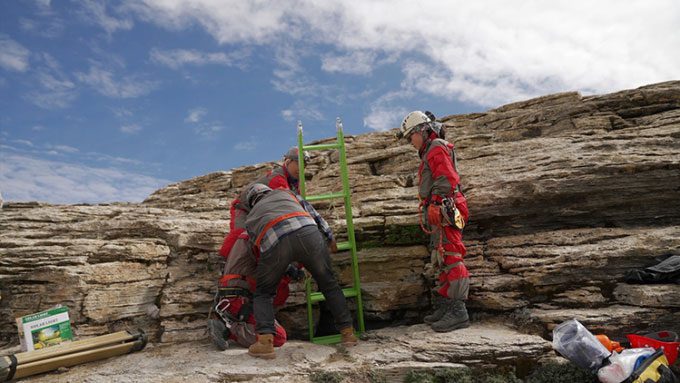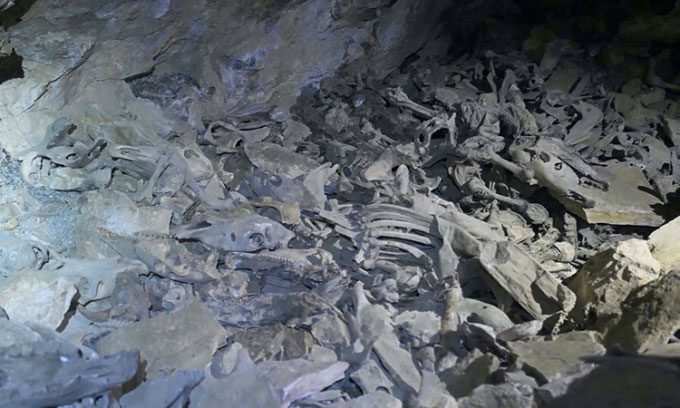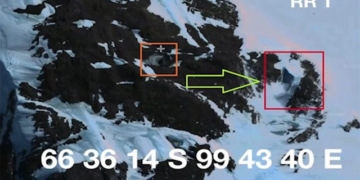A collection of bones from at least 100 individuals and hundreds of animal specimens has been excavated at the Dingqiong cave complex in Tibet.
Chinese scientists have delved into a limestone cave complex at an altitude of approximately 5,000 meters above sea level in the Tibet Autonomous Region, southwestern China, uncovering an unprecedented number of human and animal bones in the archaeological history of this sparsely populated area.

Entrance to the Dingqiong cave complex. (Photo: CGTN)
The Dingqiong cave complex is located near Qiongguo Town in Shigatse City, and is among the 46 latest archaeological discoveries in Tibet announced at the Lhasa Archaeological Achievements Conference in early May. It is also the highest known archaeological site in China.
A research team consisting of over 20 archaeologists from the Tibetan Cultural Heritage Protection Institute, Sichuan University, and the Chinese Institute of Vertebrate Paleontology and Paleoanthropology began exploring Dingqiong in July 2021.
The cave complex has an entrance diameter of only 60 cm but extends up to 67 m inside, containing 8 caves and two corridors. As they ventured deeper, the team faced numerous challenges.
“The hardest part was descending a shaft that is tens of meters deep. Therefore, we had to use single cable technology to assist everyone in going up and down,” said cave explorer Wang Deyuan from the Guizhou Mountain Resources Institute.
Working in the thin and dry air inside the cave, the archaeologists carefully cleared away remnants and conducted a comprehensive survey of the area.
“We mainly relied on laser distance meters and 3D modeling technology to collect and record information about the entire area,” Yang Feng, Deputy Director of the Archaeological Laboratory at Sichuan University, told CCTV+.

Human and animal bones piled inside the Dingqiong cave complex. (Photo: CGTN)
To date, the archaeological team has discovered at least 100 human skeletons and 350 animal skeletons at Dingqiong. Radiocarbon dating indicates that the cave complex dates back between 1,700 and 2,300 years.
“This shows that people living in western Tibet for about 600 years, from the 3rd century BC to the 3rd century AD, continuously moved the remains of their ancestors deep into this cave at an altitude of 5,000 meters. It certainly was not a place for daily living. It must have been an underground space related to sacred rituals,” emphasized Lyu Hongliang, Head of the Department of Archaeology and Museum at Sichuan University.
The research team is conducting multidisciplinary analyses related to anthropology, zooarchaeology, ancient DNA archaeology, and cave studies to further investigate the remains. These findings hold significant academic value for understanding the early history of western Tibet, as well as cultural exchanges across the Himalayas.





















































